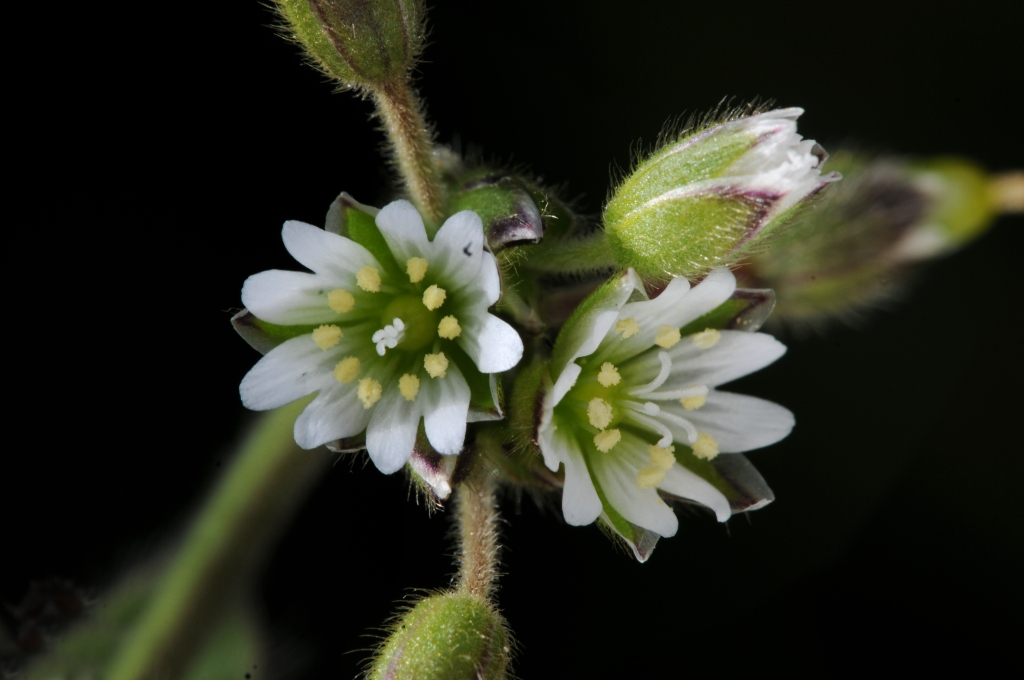Caryophyllaceae
Herbs with stems usually swollen at nodes, rarely (not in Australia) small shrubs. Leaves simple, entire, opposite with bases often connate, rarely alternate, stipules present or absent. Inflorescence usually a dichasial or occasionally partially monochasial cyme, rarely a compact head or flowers solitary. Flowers actinomorphic, bisexual, rarely unisexual and dioecious; sepals 4–5, free or connate into calyx-tube, usually with nectary-ring; petals (rarely absent) 4–5, free, often bifid; stamens (rarely 1) 5–10, hypogynous to subperigynous, filaments free or basally adnate to petals or sepals, anthers dehiscing by longitudinal slits; ovary superior, often with gynophore, syncarpous with 2–5 carpels, unilocular at least above, styles free or more or less united, stigmas dry, ovules numerous to solitary, placentation basal or free-central. Fruit a capsule with apical valves as many or twice as many as styles, or an achene or indehiscent nutlet, rarely (not in Australia) a berry; seed with a curved or straight embryo usually eccentric, starchy perisperm abundant, true endosperm usually absent.
Some 80 genera with over 2000 species, cosmopolitan but mainly Northern Hemisphere, widely distributed in cool- to warm-temperate regions but with a concentration of taxa around the Mediterranean and Middle East. In Australia, 24 genera, most being naturalised weeds of agriculture, horticulture and waste and disturbed places, a few of them also invasive of natural communities. Several other species (not treated here) may occur, usually as ephemeral garden-escapes and rarely persisting.
Adams, L.G. (1996). Caryophyllaceae. In: Walsh, N.G.; Entwisle, T.J., Flora of Victoria Vol. 3, Dicotyledons Winteraceae to Myrtaceae, pp. 228–271. Inkata Press, Melbourne.
 Spinning
Spinning


